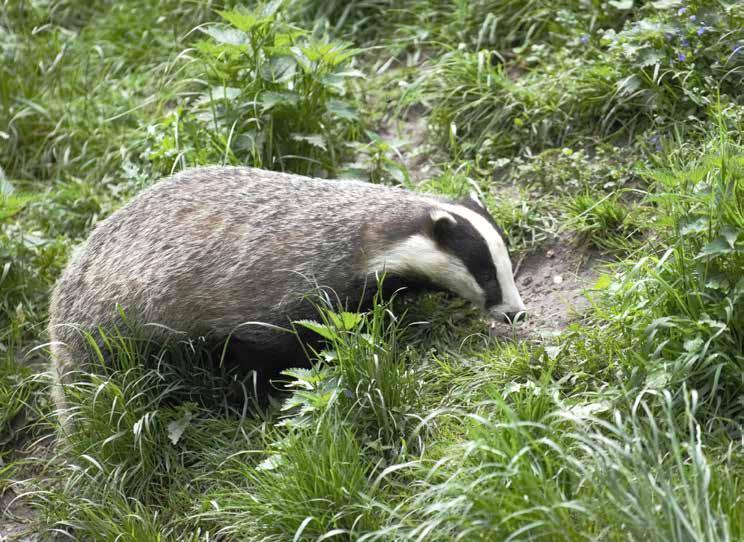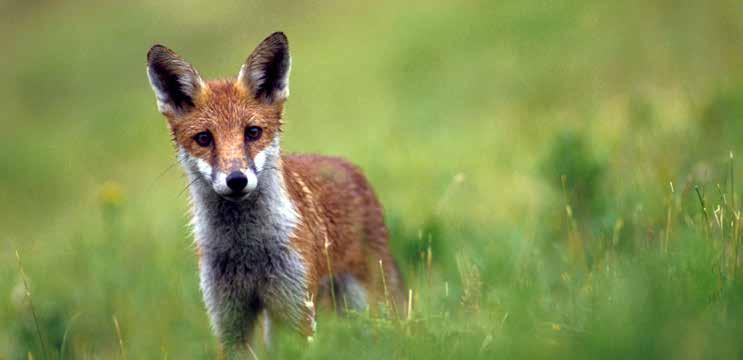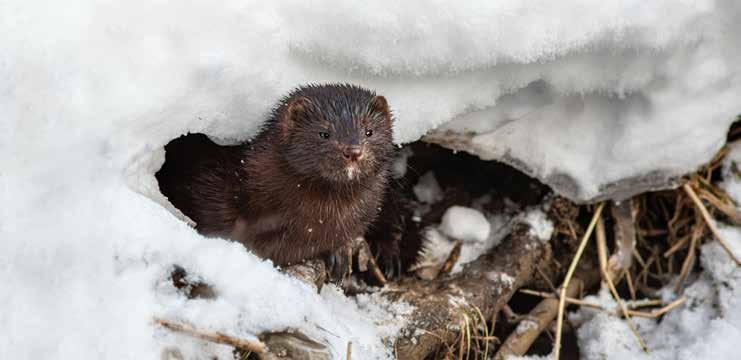
5 minute read
executive summary
Poisoning, trapping and being set upon by dogs are just some of the thousands of largely hidden and horrific acts of crime and cruelty inflicted on UK wild animals, including badgers, hares, bats and birds of prey, annually. Yet inconsistent laws and limited resources mean limitations in policing and enforcement resources, and a lack of awareness of wildlife crime. This is according to new research commissioned by IFAW from criminologists at Nottingham Trent University and the University of Gloucestershire.
This research involved a comprehensive review of UK wildlife law and enforcement responses since the Law Commission’s 2014 Wildlife Crime legislative review and subsequent work. It drilled into this further through questionnaires and digital interviews with those on the front line of wildlife crime policing and experts in the field. Participants in the 2022 research included police officers – specifically wildlife crime officers – NGOs and legal experts. Their responses indicate the inequality accorded to wildlife crime throughout the UK and also mounting concerns about wildlife crime links to organised crime.
Advertisement
Twelve (29%) of the 41 Offices for the Police and Crime Commissioner participated and 16 (37%) of the 43 police forces via questionnaires. Nine NGO representatives, academics and other experts in fields relevant to wildlife crime and UK policing were interviewed. The criminologists also examined reports and literature relating to UK wildlife law developments and the legislation itself. This research took place against a backdrop of still-to-be implemented recommendations from the United Nations Office on Drugs and Crime (UNODC) 2021 report 1 on how the UK can better tackle wildlife crime.
This report presents the story of those on the front line of wildlife crime enforcement, spotlighting some of the more prolific national crimes against our wildlife. It doesn’t tackle the wider backdrop of the many international illegal wildlife trade challenges the UK also faces, for example, relating to the trade in ivory and rhino horn, which also impact how scant resources can be directed. The challenges however are created by the same enforcement gaps that affect domestic wildlife, thus addressing them will positively impact on domestic and international wildlife crime.
Unpicking A Confusing Patchwork
Crucially both UNDOC and the Law Commission recommend that the confusing patchwork of UK wildlife crime legislation be consolidated under one law – for example a wildlife management act.

Yet despite UK government claims during its 2021 G7 presidency that wildlife crime is a priority, UNDOC and Law Commission recommendations remain unaddressed. And there is still no national system in place to indicate which government body should take the lead in relation to the enforcement of wildlife crime.
Combined with relative government inaction on both recommendations, the research findings paint a grim picture of a nation where wildlife crime is given lower status. Where crimes against animals in the wild do not count in the same way as other crimes involving drugs, firearms and violence. And this is despite the longrecognised links between animal abuse and violence against people, and serious organised crime and wildlife crime.
Making Criminal Links
Researchers have highlighted that criminal organisations are diversifying their portfolio from ‘traditional’ criminal activities, such as drug trafficking or human trafficking, into the illegal wildlife trade. This diversification is driven by the perception of the low risks of being caught and high profits. 2
Studies also highlight the disturbing connection between animal abuse and crimes including rape, sexual homicide, domestic abuse and robbery. Research reveals that 70% of people found guilty of animal abuse have committed other crimes, and 100% of individuals who commit sexual homicide have a history of animal abuse.3
Reporting And Recording
Police, legal experts and NGOs cite wildlife crime’s ‘non-notifiable’ legal status as a major source of its inequality under the law. Such status means incidents do not have to be reported by the police to the Home Office and recorded with national crime statistics.
Consequently, there is a reliance on NGOs such as the RSPB, the RSPCA , Wildlife Trusts and the League Against Cruel Sports (LACS) to gather data and fill gaps. NGOs interviewed by the criminologists shared concerns about escalating wildlife crime.
Combined NGO data, which is dependent on volunteers, shows an increase in wildlife crime of an estimated 30% (from 1,056–1,414 incidents) between 2019 and 2021.4 The real figure is likely to be much higher—in the tens of thousands— because of the voluntary collation and non-official status of the NGO work.
Crimes reported included hares chased and ripped apart by dogs for bets, the shooting of birds of prey, the stealing of bird’s eggs, illegal fox hunting and badgers being dug out and baited – set upon by dogs. There are an estimated 30,000 annual offences against badgers alone in the UK. 5
Letting Wild Animals Down
One NGO research participant commented that the system makes it not worth some officers’ time in investigating wildlife crime.
“Sadly, it’s let down at the very end stage … some of these trials take 4–5 days and then the guy gets a £200 fine or only 60 hours community service. You can ask what’s the deterrent value in that?” 28
And because wildlife crimes occur under such a veil of secrecy and in remote places, overstretched police forces have difficulty allocating resources to investigate and prosecute them.
The combined effect of law inconsistency, poor application and resource issues is that even the cruellest crimes against wild animals are seen not to count. Under UK law they simply do not matter as much as crimes involving drugs, firearms and violence against people. This is despite evidence of links between wildlife crime and other offences.
Making Them Matter
To tackle the problem IFAW is launching our campaign Make wildlife matter. We will galvanise the public, politicians and organisations to press the government to protect our precious wildlife by introducing the following measures.
Making wildlife crimes notifiable
Harmonising, simplifying and streamlining all UK wildlife law
Ensuring that there is at least one dedicated full-time wildlife crime officer per force
Incorporating wildlife crime into the Policing Education Qualification Framework
Developing enforcement, prosecution and sentencing guidelines to combat inconsistencies around wildlife crime scenarios and how those should be dealt with.
See our detailed recommendations on page 25.
“For the three years I was head of the National Wildlife Crime Unit (NWCU) I was asked by several Defra Ministers how many wildlife crimes occurred in Britain and I had to tell them, “I don’t know”.
The reason being is that even in the twenty-first century I could not push a button that would tell me the number of wildlife crimes occurring. Why? Because police forces are not obliged to report wildlife crimes that in essence are not considered serious enough.
Therefore, it is impossible to get a true reflection of the extent of wildlife crime that could then inform British policing about the strategic threat that is posed to some of our most treasured wildlife such as bats, raptors and other protected species.”
Martin Sims, recent chair of Wildlife and Countryside Link’s wildlife crime working group, and former head of the NWCU29
30% estimated increase in wildlife crime (from 1,056–1,414 incidents) between 2019 and 2021
70% of people found guilty of animal abuse have committed other crimes, and 100% of individuals who commit sexual homicide have a history of animal abuse2
30,000 estimated annual offences against badgers alone in the UK
An American mink on snow-covered ground.
A wet and harassed fox cub that was chased during the Chiddingfold, Leconfield, Cowdray Hunt in the UK.











